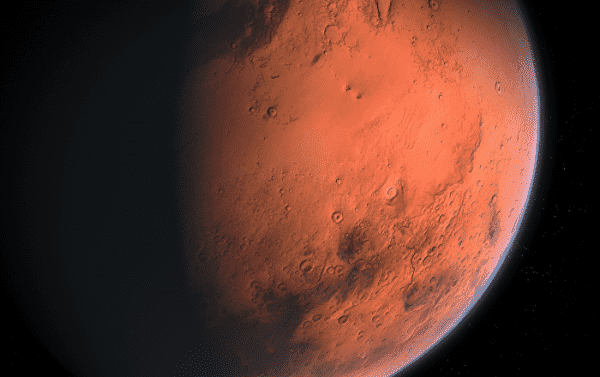
NASA’s latest Mars probe is a month away from touchdown, after which it hopes to unlock secrets of the Red Planet’s interior, such as whether the planet has a liquid metal core like Earth’s or if it’s totally solid.
InSight, the latest probe sent to our cosmic next-door neighbor by the United States’ National Aeronautic and Space Administration (NASA), is carrying with it seismometers and other equipment to help scientists deduce what the inside of Mars looks like. Like Earth, Mars has a solid crust, but underneath Earth’s surface sits a molten mantle and liquid metal core, forces that drive Earth’s earthquakes and tectonic shifts and also its dynamic magnetosphere, a vast field that protects us from cosmic rays and makes life possible. The question is: does Mars have such a core, or, as experts suspect, has it long since solidified?
Roughly 65 million miles from Earth, InSight has still got another 5 million to go before it gets to Mars, which the countdown on NASA’s site says will happen in 32 days on November 26, 2018.
On Monday, NASA’s Jet Propulsion Laboratory posted a photo taken by InSight of its destination:
With its two solar panels deployed, the craft is 19 feet 8 inches long and 5 feet 1 inch wide, weighing in at 794 pounds. It’s also got a 5-foot-9-inch robotic arm on top that it can use to deploy instruments and take photos.
InSight is on a six-month trip to the Red Planet, having launched from Vandenberg Air Force Base on board an Atlas V-401 rocket on May 5. NASA notes this was the first interplanetary launch from the United States’ West Coast.
Once on Planet Four, it’ll take InSight about 30 days to deploy its instruments and begin day-to-day science activities.
After that, it’ll use very precise equipment to measure the speed at which marsquakes (those are earthquakes but on Mars) spread through planet, including how fast they bounce off the planet’s core. It’ll also monitor the minute “wobble” in the planet’s orbit using two X-band antennas called RISE (Rotation and Interior Structure Experiment), a task that might take years to complete. Together, these measurements should tell scientists what the Martian center is like, phys.org reported on Thursday.
InSight also carries HP3 (Heat Flow and Physical Properties Package): a spike on a 16-foot-long tether, which will bury itself deep into the Martian soil. Embedded with heat sensors, HP3 will look for heat trapped inside the planet from its initial formation 4.6 billion years ago. That will tell scientists a lot about the planet’s origins and history, and help them to understand more about Martian geology, including whether it ever had liquid water.
Accompanying InSight to Mars are two briefcase-sized mini-spacecraft called Mars Cube One, or MarCO. NASA notes that they will test miniaturized deep space communication equipment and hopefully lead to advances for future missions.
Sourse: sputniknews.com






